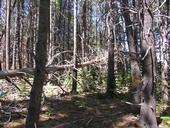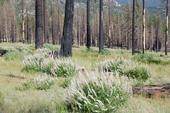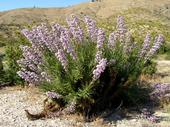- Author: Jeannette E. Warnert

Many parts of the Sierra Nevada have not burned in more than 100 years, a significant departure from a natural fire cycle that would characterize a healthy forest, according to Susie Kocher, UC Cooperative Extension advisor in the Central Sierra office.
“The fire interval is completely out of whack compared to pre-settlement conditions,” Kocher said.
In a historical, natural and healthy fire regime, nearly half of Sierra forests would experience fire every 12 years and three-quarters would burn every 20 years. However, only 0.2 percent of Sierra forest land has burned repeatedly at least every 20 years in modern times, while 74 percent has not had a single...
- Author: Katherine E. Kerlin

From California’s Ponderosa fire to Colorado’s record-breaking Waldo Canyon fire and other blazes burning across the West, the summer of 2012 -- like many recent summers -- has been marked by a long, intense wildfire season. It has claimed thousands of acres, hundreds of homes, and in some cases, lives.
Malcolm North, professor in the Department of Forest Ecology at UC Davis and U.S. Forest Service research scientist, studies the effects of fire on Sierra Nevada coniferous forests. In this video, North explains how climate change and a history of fuel suppression in the forest mean wildfires will burn hotter, faster, longer and more often --...
- Author: Susie Kocher

In the many forested areas where wildfires are currently burning, the question will soon arise: What should be done after the fire goes out? That depends on the severity of the burn and land owner goals.
For high severity burns where very few or no live trees remain to provide seed for the next generation, forest recovery can take a very long time. Typically forest landowners want to restore their lands to a forested condition as quickly as possible. In that case, an active approach can help them reach their goal sooner.
The California Tahoe Conservancy has just released a report on the outcomes of active restoration of 40 acres of Conservancy lands where...
- Author: Marissa Palin
I’m from San Diego. We don’t get a whole lot of extreme weather in San Diego. My comfortable temperature tends to range from 70 to 80 degrees. We don’t get snow, no hurricanes, no tornadoes. But we do get the Santa Anas—hot dry winds blowing out of the desert. Which means we get wildfires. I’m fairly familiar with wildfires. So much so, that I once mistook snow falling from the sky for ash falling from the sky. (Like I said, I’m from Southern California).
Our last big fires were in 2007, when half a million...
- Author: Sabrina L. Drill

Poodle-dog Bush is a California native plant and a common fire follower. This attractive plant has reached very high densities in recently burned areas, and is an important early colonizer that can help these areas recover. Look but don’t touch (or smell or collect) though, because this plant can cause serious allergic reactions for some people.
A member of the forget-me-not family (Boraginaceae), the poodle-dog bush, Terricula parryi, is a subshrub (with flexible, slightly woody stems) commonly found in disturbed areas, but rarely seen under undisturbed conditions. It can grow almost 10 feet tall and has purple bell-shaped flowers. It grows in recently burned areas of several vegetation types including forest,...



